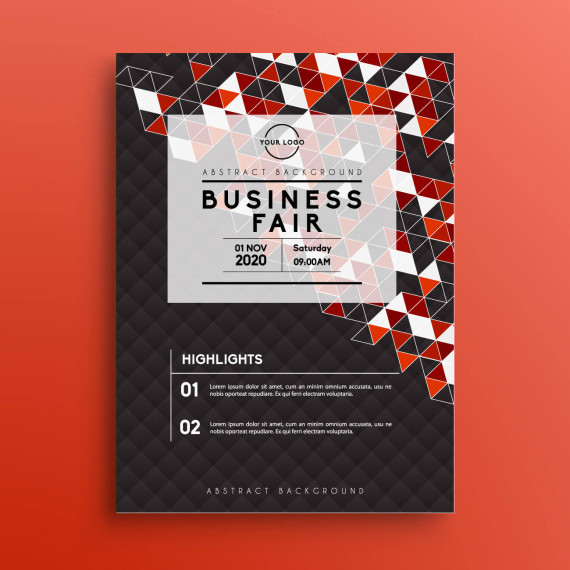
Designing Business Flyers Tips for Trade Shows and Events
Flyers are an essential marketing tool for businesses, especially when it comes to trade shows and events. They serve as a powerful means of communication, grabbing the attention of potential customers and conveying important information about products, services, or special promotions. In this article, we will explore some designing business flyers tips that are highly effective and can make a significant impact at trade shows and events.
Tips for Designing Business Flyers
Creating a Compelling Headline
The headline of your flyer plays a crucial role in grabbing attention. Make it clear, concise, and compelling. Use strong and persuasive words that pique curiosity and make people want to read more. A well-crafted headline can entice potential customers to explore your flyer further.
Incorporating Eye-Catching Graphics
Visual elements are essential for capturing attention and creating a memorable impression. Use high-quality images, illustrations, or graphics that are relevant to your business and convey the message effectively. Ensure that the visuals are attractive, professional, and aligned with your brand identity.
Crafting a Clear and Concise Message
Keep your flyer content concise and to the point. Use persuasive language and focus on the key benefits or unique selling points of your product or service. Avoid cluttering the flyer with excessive information. Instead, provide enough details to generate interest and encourage further engagement.
Utilizing High-Quality Images
When selecting images for your flyer, opt for high-resolution pictures that are visually appealing and relevant. Images can help create an emotional connection with your audience and enhance the overall impact of your message. Avoid using generic stock photos and instead consider custom visuals that reflect your brand personality.
Choosing the Right Color Scheme
Colors evoke emotions and have a significant impact on the viewer's perception. Select a color scheme that aligns with your brand and evokes the desired emotions. Use contrasting colors to highlight important information and create visual hierarchy. Remember to maintain consistency in your color choices throughout the flyer.
Selecting an Appropriate Font
Choose a font that is easy to read and matches the tone and style of your business. Stick to two or three fonts at most to maintain visual harmony. Use larger fonts for headlines and subheadings, and slightly smaller fonts for the body text. Ensure there is enough white space to make the content visually appealing and legible.
Providing Contact Information
Make it easy for potential customers to get in touch with you. Include essential contact information such as your phone number, email address, website URL, and social media handles. Consider adding a QR code that allows quick access to additional information or special offers.
Adding a Call to Action
Encourage readers to take action by including a clear and compelling call to action (CTA). Whether it's visiting your website, making a purchase, or attending an event, guide your audience towards the desired outcome. Use action verbs and create a sense of urgency to motivate them to act immediately.
Using Testimonials and Social Proof
Include testimonials or reviews from satisfied customers to build credibility and trust. Social proof is a powerful tool that can influence the decision-making process. Highlight positive feedback or showcase notable achievements to reinforce the value of your business.
Printing and Paper Quality
Invest in high-quality printing and paper to enhance the perceived value of your flyer. The texture, finish, and weight of the paper can significantly impact the overall impression. Choose a printing technique that enhances the visual appeal of your design, such as embossing or spot UV coating.
Proofreading and Quality Assurance
Before finalizing your flyer design, carefully proofread the content to ensure there are no spelling or grammatical errors. Review the layout, alignment, and overall design elements to ensure a polished and professional appearance. Consider seeking feedback from others to gain different perspectives.
Distributing Your Flyers
Develop a strategic distribution plan to ensure your flyers reach the right audience. Display them at trade shows, events, or local businesses where your target audience is likely to be present. Distribute them through direct mail, handouts, or by partnering with relevant organizations. Leverage digital platforms to extend your reach.
Measuring the Success of Your Flyer Campaign
After distributing your flyers, track the response and effectiveness of your campaign. Monitor metrics such as website traffic, lead generation, or direct inquiries. Use this data to evaluate the success of your flyer design and make necessary adjustments for future marketing initiatives.
Conclusion
Designing business flyers for trade shows and events requires careful consideration of various factors. By following the tips mentioned above, you can create compelling and visually appealing flyers that effectively communicate your message to your target audience. Remember to align your design with your brand identity and consistently monitor the success of your campaign to refine your strategies.
